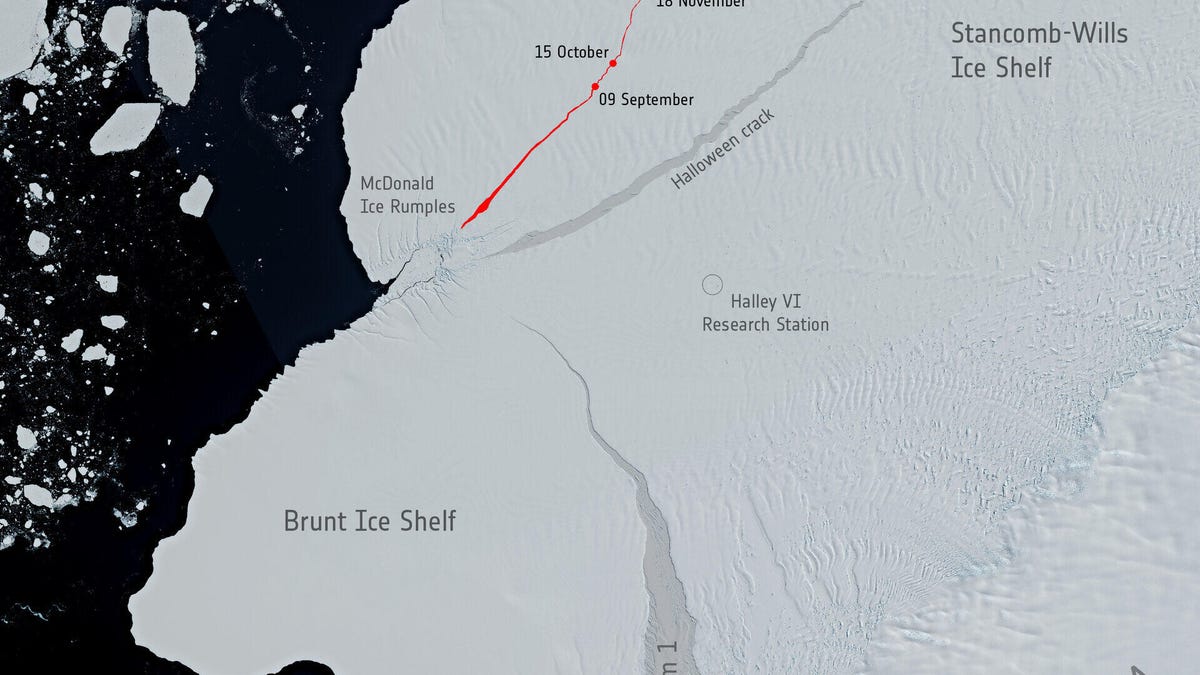Scientists wait for epic new Antarctica icebergs to break free
The Brunt Ice Shelf is cracking up.
It's a waiting game at this point. Scientists have been eying the Brunt Ice Shelf in Antarctica since early 2019, expecting a giant iceberg to break free. It hasn't happened yet, but there are some cracking new developments in the area.
The European Space Agency (ESA) had calculated that an iceberg the size of Greater London was likely to break off. "Almost two years later, the berg is desperately clinging on, although current data indicate calving is imminent," ESA said in a statement last week. "A new crack, spotted in images captured by the Copernicus Sentinel missions, now suggests the potential for calving of multiple bergs."
Satellite views of the area show quite a bit of activity, and some of the larger features even have names. The "Halloween crack" was first spotted on Oct. 31, 2016. "Chasm 1" is a massive crack with a history spanning over 25 years. The new, unnamed crack is what's getting a lot of attention now. It's marked in red and has had a rapid expansion.
This enhanced map shows satellite data collected by the Copernicus Sentinel-1 satellite highlighting ice surface velocity. The area in red above the "new crack" is considered to be the most unstable.
NASA is also watching the cracks grow along the ice shelf and wondering if it will spawn an iceberg before the summer season ends. "The breaking, or 'calving,' of icebergs from ice shelves is part of a natural, cyclical process of growth and decay at the limits of Earth's ice sheets," said NASA's Earth Observatory in January.
It's been a long time since Brunt unleashed a big berg. ESA said the last major calving event took place in 1971. It's not just satellites that are monitoring the happenings along the ice shelf. The British Antarctica Survey had to relocate its Halley VI research station to a safer and more stable spot.
A different Antarctic berg recently caused a scare when a massive chunk of floating ice approached the wildlife haven of South Georgia Island. That iceberg began to break up and it appears the seals and penguins on the island will likely be spared from disaster.
Satellites have been invaluable in tracking changes in Antarctica and we may soon get some eye-opening views of a new iceberg being born from Brunt.


